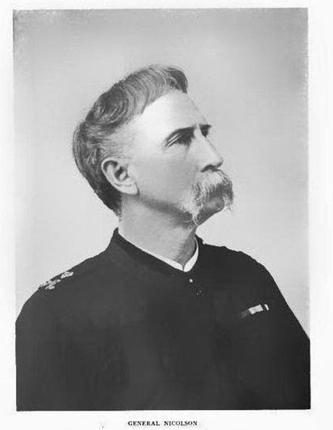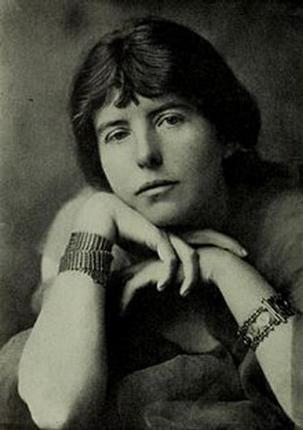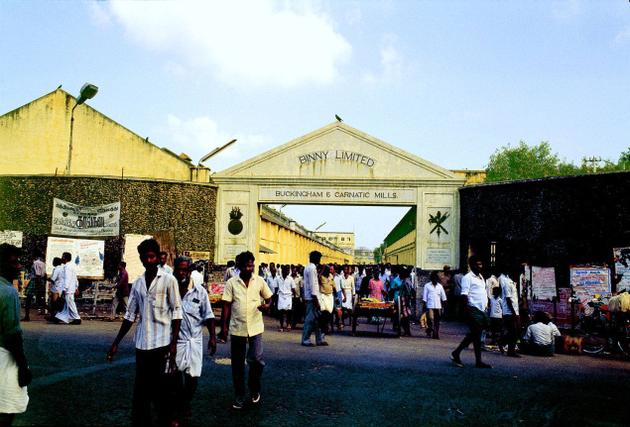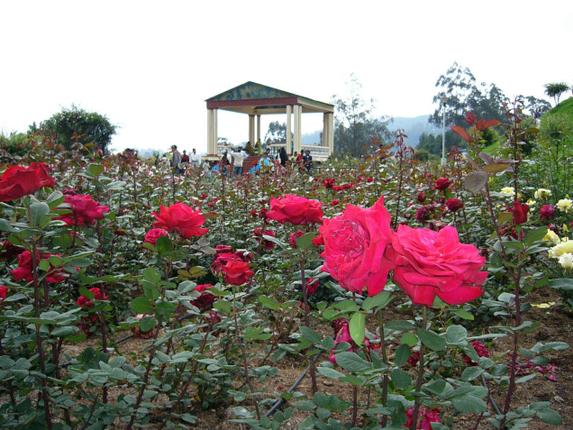
When Virginia Jealous speaks to members of the Madras Book Club this evening she might report that midst all the tall grass in the unkempt St. Mary’s Cemetery on The Island she found the tombstones of Adele Florence Nicolson and Lieutenant General Malcolm Nicolson.
John Jealous, her father, had found them side by side during his first visit to Madras in 1989, soon after he had started on the trail of a woman who was to become the obsession of his life as he pieced together her life during several subsequent visits to Madras and other parts of India for a book that didn’t get written; he passed away before he got to it. Now his daughter Virginia, a poet and a travel writer, who has been following his trail, hopes to write a book on that journey as well as on the woman who was the second great love of his life, Laurence Hope.

What he — and Virginia — didn’t get to see was the mansion where she committed suicide a few months after her husband died. Dunmore House, in Alwarpet, was where Florence Nicolson, whom few knew as the famed poet of the 19th Century, Laurence Hope, and her husband, who called her Violet, lived for some months after they returned to India in 1904.
Murray’s Gate Road, named after the Hon. Leveson Granville Keith Murray, Collector of Madras between 1822 and 1831, led to Dunmore House, so named by him because he was the son of the fourth Earl of Dunmore. Whether he built the great garden house he lived in during those years is not known, but the house no longer exists.
What happened to the house in the 50 years immediately after Murray retired in 1831 after 38 years in the Madras Civil Service is not known but in 1888 it was bought by Eardley Norton, the well-known lawyer, for Rs. 47,800 in a Court sale.
The house was next bought from Norton’s estate in 1910 by the Maharaja of Pithapuram. A tragedy in the Pithapuram family led to them moving out to Cenotaph Road and, no doubt, Dunmore House remained rented out till businessman K. Gopalakrishnan bought it in 1941. Over the years that followed, the acreage of Dunmore House was sold off in substantial plots and its northern half became Venus Studios, home to Venus Pictures. After the studio closed down, the property was developed as today’s Venus Colony. In the southern half, a couple of roads close to Dunmore House take their names from members of the Pithapuram family, and some members of Gopalakrishnan’s family have homes on these roads. But none in the area seems to know of Laurence Hope.
Laurence Hope wrote impassioned poetry that as the ‘Indian Love Lyrics’ scandalised Victorian England. Her ‘Pale Hands I loved By The Shalimar’, her best remembered poem, had many tattlers nattering about a love affair with a young Kashmiri after her identity got known.
But her only known love affair was with the then Col. Nicolson, 46 at the time, whom she married in 1889 when she was 23. She was the daughter of Arthur Cory, who was the Editor of North India’s leading newspaper, the Civil and Military Gazette, published from Lahore. The Corys had arrived in India in 1881. The General, an Indophile like her, was ADC to Queen Victoria for a few years before his retirement in 1893. On his retiring, the Nicolsons returned to India and settled in Calicut for a few months before illness brought them to Madras for their last year. They died in 1904.
Laurence Hope’s poetry was read in closed rooms in the late 19th-early 20th Century but by the 1920s it had been set to music and was sung at tea soirees in the world’s leading hotels. She was certainly a woman ahead of her times, most people of the time resenting her intellectuality and her passion.
******
Back almost to roots
The House of Binny, in its 225th year, appears to be going back to one of its first, and most successful, businesses, liquor. For years now there has been little talk of Binny’s in business circles, if you except all the speculation about what it plans to do with its considerable holding of land in Perambur. The latest news, however, is that Binny’s is back in business again, with Mohan Breweries and Distilleries being merged with it. With Binny’s at present having no business operations, the merger will make liquor its business again.
From its earliest days as Binny & Dennison in the first years of the 19th Century, wines, spirits and beer was one of its largest imports, either for sale or ordered by individuals and institutions. Madeira was one of its major wines, but it provided it an export opportunity too. It was found that Madeira was a wine that matured particularly well in Madras and casks of it were imported, matured locally and re-exported to Britain.
A wine story retailed over generations in Binny’s Liquor Department concerned a veteran employee in the Department, Alex Rodrigues, who in 1873 blotted his copybook. When seven casks of Madeira, each of different quality, were found to be short through leakage or evaporation, he topped them up with loose Madeira they had around, quality be damned. He followed this up by washing empty claret bottles with the best brandy in stock. He got away with it all with a 15 per cent (Rs.15) pay cut.

But for all the liquor business Binny’s did up to the 1940s, it publicly expressed concern over the ‘Drink Evil’, particularly as it affected production in its mills. In 1924, it persuaded Government to allow the six toddy shops and two arrack shops in the vicinity of the mills to be open only during mill working hours; frustrated workers, thus, found it difficult to get a drink after work, their usual drinking hours. And as for Sundays, it got Government to allow the liquor shops to be open only from 12 to 3 in the afternoon, siesta time. All this, however, did not completely solve the problem the mills — and the families of workers — faced. Binny’s as late as 1935 had temperance workers doing the round of workers’ colonies lecturing on the ills of drink, and its dramatic society often staged plays on the same theme in those areas.
All this is unlikely to be seen when the new township in 70 acres of Binny Mills property is developed over the next few years in partnership with the SPR Group. This is promised to be an integrated, self-contained residential township with every facility, from healthcare to education, from hotels to entertainment, provided for. But will it be named Binnyville or Binnypuram in memory of a once grand old institution that helped considerably in the growth of Madras?
******
Does a rose need a name?
Dharmalingam Venugopal, that dedicated documenter of the Nilgiris, tells me that he recently received a letter from a Colin Sullivan, a descendant of John Sullivan, who opened up the Nilgiris and is considered the progenitor of Ooty, wondering whether the Government of Tamil Nadu would name a rose in the Ooty Rose Garden after John Sullivan.

Rose plants, it is stated, first came into the Presidency in 1831 from England when Governor Stephen Lushington of Madras placed an order for them. A reference to the Ooty Botanical Gardens in 1832 speaks of the “fragrance of roses” filling the air. Did these roses come to the Gardens from John Sullivan?
Sir Frederick Price, who wrote one of the most definitive records of Ooty and its history (1908), said, “I consider that the introduction of European vegetables and of the apple, peach and strawberry may safely be attributed to Mr. Sullivan.” So why not roses? After all, John Sullivan was associated with the Nilgiris and Ooty from 1817 till the 1840s.
John Sullivan, the Madras Civilian, would certainly warrant a bit of Nature’s bounty being named after him.
source: http://www.thehindu.com / The Hindu / Home> Features> MetroPlus> Society / by S. Muthiah / December 14th, 2014